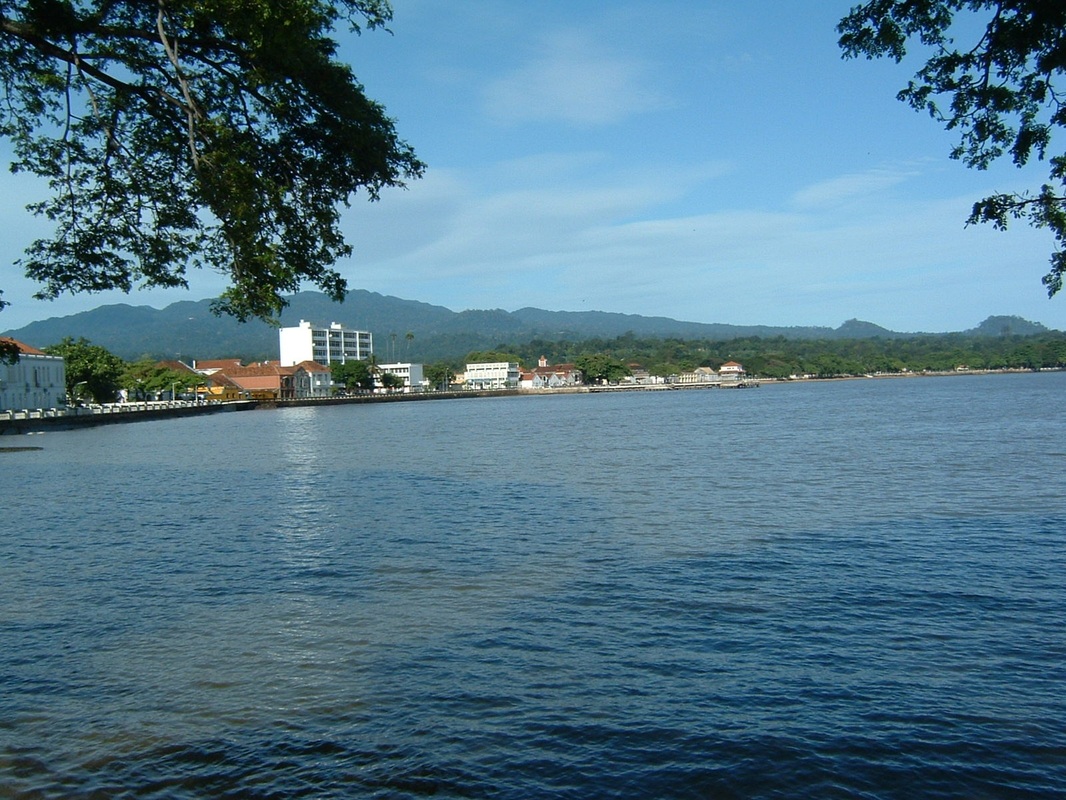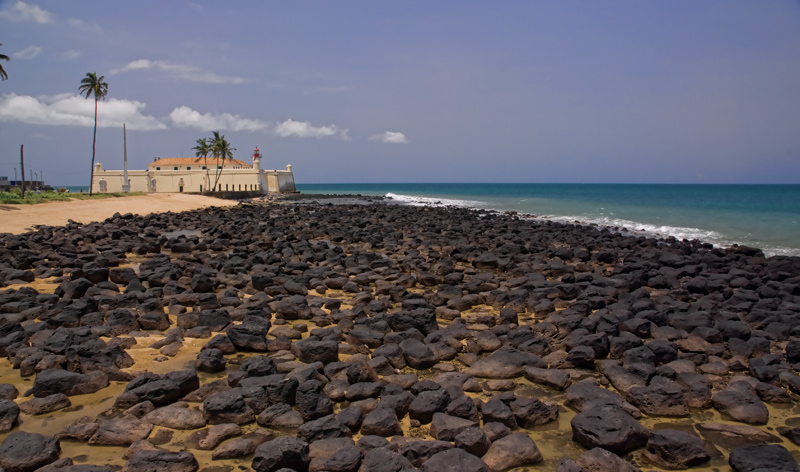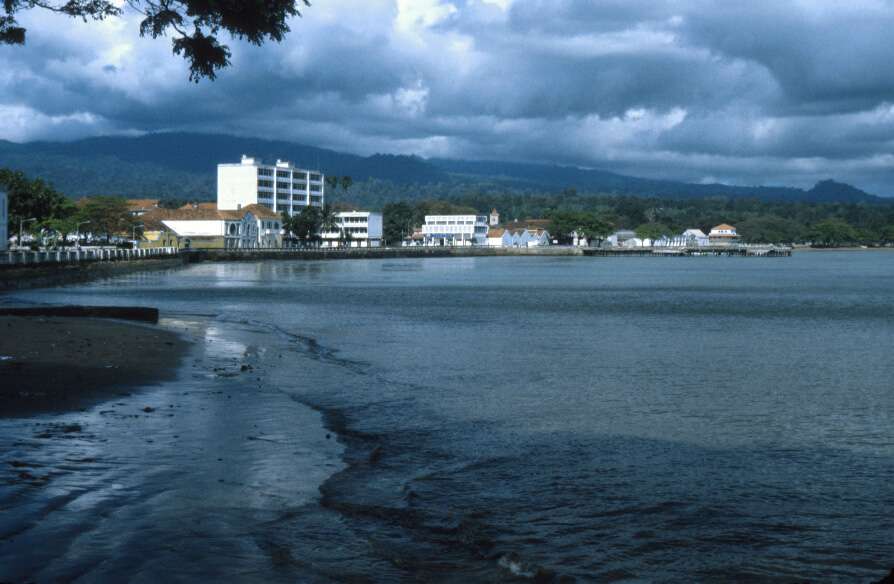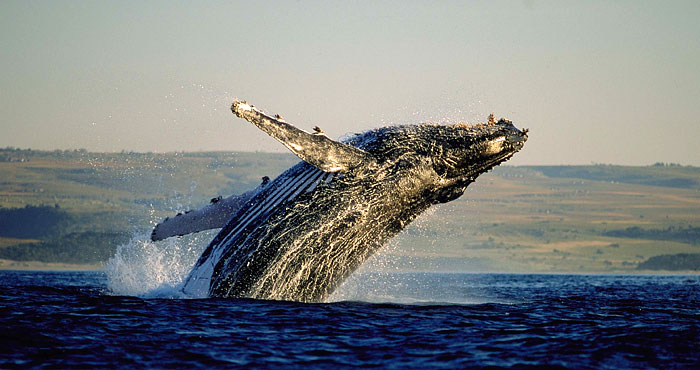PeopleThe people of Sao Tome and Principe are called Sao Tomeans. According to their July 2009 estimate, the population is about 212,679 and they have an annual growth rate of 3.093%. The life expectancy is estimated to be 68.32 years and infant mortality is currently estimated to be 37.12 out of 1,000. The work force is predominantly devoted to commerce and services, and this constitutes about 36.5% of the population. The agricultural sector trails behind with 15.3% of the workforce while the government workers represent about 11.5% of the population. There are 6 different ethnic groups including the Mestico or mixed-blood ("sons of the land"), the Angolares, the Forros, the Servicais, the Tongas, and the Europeans (primarily the Portuguese).
|
Principe and Sao Tome is a country that started in the late 15th century when it was discovered and claimed by Portugal. It is an island nation in West Africa located in the Gulf of Guinea and to the west of Gabon. The country has two islands called Sao Tome and Principe and they are 140 km apart (87 miles). These islands stand at 250km (approximately 155 miles) and 225 km (approximately 140 miles) respectively from the northwest coast of Gabon. The mountains are volcanic mountain ranges. The official language in the country is Portuguese since they were colonized by Portugal. Their population is the second smallest in Africa and it also has a small land size of 386 square miles. The Sao Tomeans use the Dobra (Db) as their currency. Its multi-ethnicity and multi-Christian denominations attract a lot of people to the country. |
Geography
Sao Tome is more populated since it is the larger of the two islands. Its peaks measure up to 6640 feet. Principe is much smaller with two volcanic peaks. The country also has some smaller islands. The climate is tropical at sea level and the wet and dry seasons are as a result of the topography. The average yearly temperature is 80.6 degrees Fahrenheit. The rainy season starts in May and ends in October. It rains more on the southwestern slopes and less in the Northern lowlands.
HistorySao Tome and Principe was first discovered between 1469 and 1472 by navigators from Portugal. The first man to settle in Sao Tome was Alvaro Caminha in 1493. In 1500, Principe was settled.
The earliest commerce for the early Portuguese settlers was harvesting and exporting sugar. As a result, the country became the highest exporter of sugar in Africa. Portugal overtook Sao Tome in 1522 and Principe in 1573. Because of the fertile volcanic soils, the Portuguese introduced two new cash crops, coffee and cocoa, and in 1908, they became the largest producer of cocoa in the world. In 1953, serious labor unrest arose as a result of poor working conditions. This led to several deaths and today it is remembered as the "Batepa Massacre". By the late 1950's efforts were made to achieve independence, but did not bear fruit until July 12, 1975. In 1990, it became a democratic nation. |
Famous Attraction
Principe:
Anyone going to Sao Tome and Principe for tourism will be well rewarded. In Principe, the main town, Santo Antonio, is known for its colonial architecture. There are also two very attractive cocoa plantations, Ilehu Bom Bom(an island in the northern coast of Principe) and Pico de Principe.
Sao Tome:
There are Portuguese architecture, attractive parks, and Racas cocoa plantation. In addition, there is the Agostinho Neto- the largest plantation in the country. Boca de Inferno (also called Hell's mouth), a very high seawater fountain, and Casacda Sao Nicolau waterfall, are also here, as well as the highest mountain in the archipelago called Pico de Sao Tome.
Obo National Park:
Covering about 30% of the country's surface, this large expanse encompassses different biotopes, mountain forests, mangroves and savanna area.
Anyone going to Sao Tome and Principe for tourism will be well rewarded. In Principe, the main town, Santo Antonio, is known for its colonial architecture. There are also two very attractive cocoa plantations, Ilehu Bom Bom(an island in the northern coast of Principe) and Pico de Principe.
Sao Tome:
There are Portuguese architecture, attractive parks, and Racas cocoa plantation. In addition, there is the Agostinho Neto- the largest plantation in the country. Boca de Inferno (also called Hell's mouth), a very high seawater fountain, and Casacda Sao Nicolau waterfall, are also here, as well as the highest mountain in the archipelago called Pico de Sao Tome.
Obo National Park:
Covering about 30% of the country's surface, this large expanse encompassses different biotopes, mountain forests, mangroves and savanna area.
Culture
The country is very unique in many ways. Since it is multi-ethnic, there are several cultural heritages that either stand on their own or are interwoven and accepted by all. In Sao Tome, the people are known for ussua and socope rhythms, while in Principe, the dexa beat is a very popular. Portuguese ballroom dancing may have played an essential role in the development of the country's rhythms and dances. Furthermore, the people of Sao Tome Island like "Tchiloli", used to tell a story in drama. Similarly, "danco-congo" is another musical dance performance that is acted and sung as in a drama. Only the men perform this music. They wear frock coats, cock hats, white gloves, sequins and colorful ornaments while acting.
CuisineThe country's festivals and traditions have been greatly influenced by their different cultures. On such special occasions as weddings, parties, and baptisms, the people prefer the Portuguese cooking style, with the display of numerous dishes, with food, bottled beverages to adorn the tables, along with roasted goat, chicken, and beef. One distinctive way they cook chicken is to stew it in a peanut and tomato sauce. They also like to marinate chicken in an onion-mustard mixture. In any ceremony organized by the people of Sao Tome and Principe, you will typically see bread rolls stuffed with canned salami or sausages from Portugal or prepared by themselves as taught by their former Portuguese masters.
Traditionally, the cuisine consists of tropical root crops, plantains, bananas, and fish. They also eat green vegetables cooked in red palm oil, or a rich bean stew called "feijoada". The native drinks are palm wine and local cane alcohol. The most common snack food is corn, and such fruits as papayas and guavas are abundant. |
Qunar







